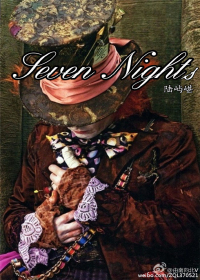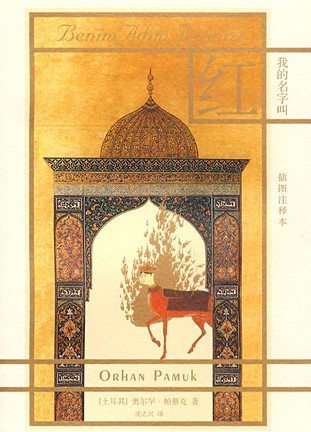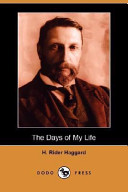my name is red-我的名字叫红-第102章
按键盘上方向键 ← 或 → 可快速上下翻页,按键盘上的 Enter 键可回到本书目录页,按键盘上方向键 ↑ 可回到本页顶部!
————未阅读完?加入书签已便下次继续阅读!
fainting as they beheld each other after an extended separation; and a spirited
picture; all aflutter with birds; trees and flowers; of Salaman and Absal as they
fled the entire world and lived together on an isle of bliss。 Like a true great
master; he couldn’t help drawing my attention to some oddity in a corner of
even the worst painting; perhaps having to do with an oversight on the part of
the illuminator or perhaps with the conversation of colors: As might be
expected; Hüsrev and Shirin are listening to a charming recital by her ladies…in…
waiting; but see there; what kind of sad and spiteful painter had needlessly
perched that ominous owl on a tree branch?; who had included that lovely boy
dressed in woman’s garb among the Egyptian women who cut their fingers
trying to peel tasty oranges while gazing upon the beauty of handsome
Joseph?; could the miniaturist who painted ?sfendiyar’s blinding with an
arrow foresee that later on he; too; would be blinded?
We saw the angels acpanying Our Exalted Prophet during his
Ascension; the dark…skinned; six…armed; long…white…bearded old man
symbolizing Saturn; and baby Rüstem sleeping peacefully in his mother…of…
pearl…inlaid cradle beneath the watchful eyes of his mother and nursemaids。
We saw the way Darius died an agonizing death in Alexander’s arms; how
Behram Gür withdrew to the red room with his Russian princess; how
Siyavush passed through fire mounted on a black horse whose nostrils bore no
peculiarity; and the woeful funeral procession of Hüsrev; murdered by his own
son。 As Master Osman rapidly picked out the volumes and set them aside; he
would at times recognize an artist and show me; or winkle out an illustrator’s
signature humbly hidden among flowers growing in the seclusion of a ruined
building; or hiding in a black well along with a jinn。 By paring signatures
328
and colophons; he could determine who’d taken what from whom。 He’d flip
through certain books exhaustively in hope of finding a series of pictures。 Long
silences passed wherein nothing but the faint susurrus of turning pages could
be heard。 Occasionally; Master Osman would cry out “Aha!” but I kept my
peace; unable to understand what had excited him。 At times he would remind
me that we’d already encountered the page position or arrangement of
trees and mounted soldiers of a particular illustration in other books; in
different scenes of pletely different stories; and he’d point out these
pictures again to jog my memory。 He pared a picture in a version of
Nizami’s Quintet from the time of Tamerlane’s son Shah R?za—that is; from
nearly two hundred years ago—with another picture he said was made in
Tabriz seventy or eighty years earlier; and then go on to ask me what we could
learn from the fact that two miniaturists had created the same picture without
having seen each other’s work。 He ansself:
“To paint is to remember。”
Opening and shutting old illuminated manuscripts; Master Osman would
sink his face with sorrow into the wondrous artwork (because nobody could
paint this way anymore) and then bee animated with joy before poorly
executed pieces (for all miniaturists were brethren!)—and he’d show me what
the artist had remembered; that is; old pictures of trees; angels; parasols; tigers;
tents; dragons and melancholy princes; and in the process; what he hinted at
was this: There was a time when Allah looked upon the world in all its
uniqueness; and believing in the beauty of what he saw; bequeathed his
creation to us; his servants。 The duty of illustrators and of those who; loving
art; gaze upon the world; is to remember the magnificence that Allah beheld
and left to us。 The greatest masters in each generation of painters; expending
their lives and toiling until blind; strove with great effort and inspiration to
attain and record the wondrous dream that Allah manded us to see。 Their
work resembled Mankind recalling his own golden memories from the very
beginning。 Unfortunately; even the greatest masters; just like tired old men or
great miniaturists gone blind from their labors; were only vaguely able to
recollect random parts of that magnificent vision。 This was the mysterious
wisdom behind the phenomenon of old masters who miraculously drew a
tree; a bird; the pose of a prince washing himself in the public baths or a sad
young woman at a window in exactly the same way despite never having seen
each other’s work and despite the hundreds of years that separated them。
Long afterward; once the red light of the Treasury had dimmed and it
became evident that the cabi contained none of the gift books that Shah
329
Tahmasp had sent to Our Sultan’s grandfather; Master Osman revisited the
same logic:
“At times; a bird’s wing; the way a leaf holds to a tree; the curves of eaves;
the way a cloud floats or the laugh of a woman is preserved for centuries by
passing from master to disciple and being shown; taught and memorized over
generations。 Having learned this detail from his master; the miniaturist
believes it to be a perfect form; and is as convinced of its immutability as he is
of the glorious Koran’s; and just as he memorizes the Koran; he’ll never forget
this detail indelibly painted in his memory。 However; never forgetting does not
mean the master artist will always use this detail。 The customs of the
workshop wherein he extinguishes the light of his eyes; the habits and taste for
color of the ornery master beside him or the whims of his sultan will; at times;
prevent him from painting that detail; and he’ll draw a bird’s wing; or the way
a woman laughs—”
“Or the nostrils of a horse。”
“—or the nostrils of a horse;” said a stone…faced Master Osman; “not the
way it’s been ingrained in the depths of his soul; but according to the custom
of the workshop where he presently finds himself; just like the others there。
Do you understand me?”
From a page in Nizami’s Hüsrev and Shirin; quite a few versions of which
we’d thumbed through already; in a picture depicting Shirin seated on her
throne; Master Osman read aloud an inscription engraved on two stone plates
above the palace walls: EXALTED ALLAH PRESERVE THE POWER OF THE
VICTORIOUS SON OF TAMERLANE KHAN; OUR NOBLE SULTAN; OUR JUST
KHAN; PROTECT HIS SOVEREIGNTY AND DOMAINS SO HE MAY FOREVER BE
CONTENTED (the leftmost stone read) AND WEALTHY (the rightmost stone
read)。
Later; I asked; “Where might we find illustrations wherein the miniaturist
has rendered a horse’s nostrils in the same way they were etched upon his
memory?”
“We must locate the legendary Book of Kings volume that Shah Tahmasp
sent as a gift;” said Master Osman。 “We must revisit those glorious old days of
legend; when Allah had a hand in the painting of miniatures。 We have many
more books yet to examine。”
It crossed my mind that; just perhaps; Master Osman’s main goal was not
to find horses with peculiarly drawn noses; but to scrutinize as much as
possible these spectacular pictures that had slept quietly for years in this
330
Treasury safe from prying eyes。 I grew so impatient to find the clues that
would unite me with Shekure; who awaited me at the house; that I’d been
loath to believe that the great master might want to stay in the icy Treasury as
long as possible。
Thus did we persist in opening other cabis; other chests shown us by the
aged dwarf; to examine the pictures therein。 Periodically; I’d get fed up with
the pictures; which all looked alike; and wish never again to watch Hüsrev visit
Shirin under the castle window; I’d leave the master’s side—without
![(伪犯罪心理同人)[伪犯罪心理]gimmick game人封面](http://www.8kbook.com/cover/2/2722.jpg)
![[秘密(世界上最神奇的潜能开发训练)][1].(美)华莱士·d.沃特斯&封面](http://www.8kbook.com/cover/noimg.jpg)



